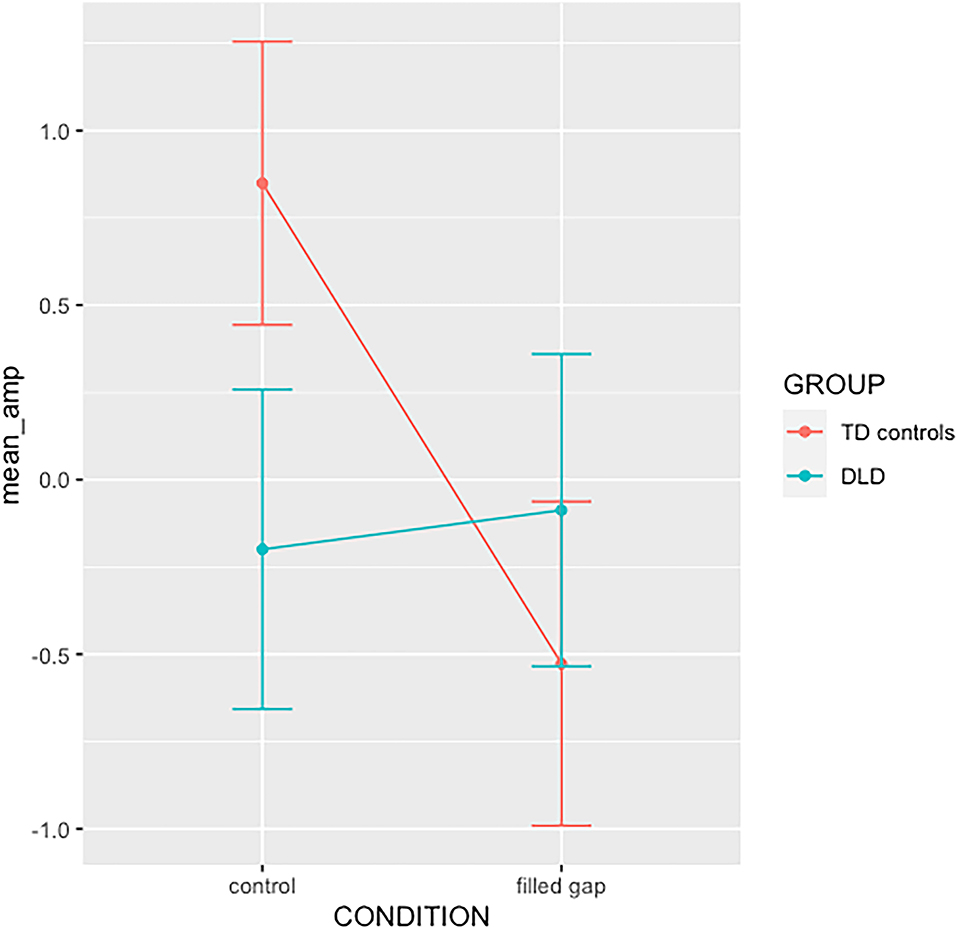
95% of researchers rate our articles as excellent or good
Learn more about the work of our research integrity team to safeguard the quality of each article we publish.
Find out more
CORRECTION article
Front. Commun. , 03 May 2022
Sec. Psychology of Language
Volume 7 - 2022 | https://doi.org/10.3389/fcomm.2022.901133
This article is part of the Research Topic Variability in Language Predictions: Assessing the Influence of Speaker, Text and Experimental Method View all 11 articles
This article is a correction to:
Developmental Language Disorder as Syntactic Prediction Impairment
A Corrigendum on
Developmental Language Disorder as Syntactic Prediction Impairment
by Hestvik, A., Epstein, B., Schwartz, R. G., and Shafer, V. L. (2022). Front. Commun. 6:637585. doi: 10.3389/fcomm.2021.637585
In the original article, there was a mistake in Figure 10 as published. The order of the labels on the horizonal axis was “filled gap” then “control”. The correct order should be “control” and then “filled gap.” The corrected Figure 10 appears below.

Figure 10. Interaction plot for the 2x2 design GROUP x Condition interaction in TF04SF1. Error bar indicate standard error.
The authors apologize for this error and state that this does not change the scientific conclusions of the article in any way. The original article has been updated.
All claims expressed in this article are solely those of the authors and do not necessarily represent those of their affiliated organizations, or those of the publisher, the editors and the reviewers. Any product that may be evaluated in this article, or claim that may be made by its manufacturer, is not guaranteed or endorsed by the publisher.
Keywords: syntax, gap-filling, prediction, event-related potentials, developmental language disorder, relative clauses, sentence processing
Citation: Hestvik A, Epstein B, Schwartz RG and Shafer VL (2022) Corrigendum: Developmental Language Disorder as Syntactic Prediction Impairment. Front. Commun. 7:901133. doi: 10.3389/fcomm.2022.901133
Received: 21 March 2022; Accepted: 22 March 2022;
Published: 03 May 2022.
Approved by:
Frontiers Editorial Office, Frontiers Media SA, SwitzerlandCopyright © 2022 Hestvik, Epstein, Schwartz and Shafer. This is an open-access article distributed under the terms of the Creative Commons Attribution License (CC BY). The use, distribution or reproduction in other forums is permitted, provided the original author(s) and the copyright owner(s) are credited and that the original publication in this journal is cited, in accordance with accepted academic practice. No use, distribution or reproduction is permitted which does not comply with these terms.
*Correspondence: Arild Hestvik, aGVzdHZpa0B1ZGVsLmVkdQ==
Disclaimer: All claims expressed in this article are solely those of the authors and do not necessarily represent those of their affiliated organizations, or those of the publisher, the editors and the reviewers. Any product that may be evaluated in this article or claim that may be made by its manufacturer is not guaranteed or endorsed by the publisher.
Research integrity at Frontiers

Learn more about the work of our research integrity team to safeguard the quality of each article we publish.